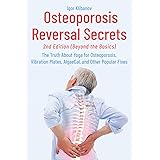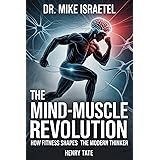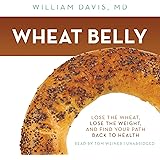According to extensive research, including a review of more than 60 studies, a common belief about weight loss is proving to be largely ineffective. Many of us have been conditioned to think that consistent exercise is the primary driver for shedding pounds. However, as the video above clearly outlines, the science tells a different story: exercise is actually pretty useless when it comes to significant weight loss.
This revelation might be surprising, especially if you’ve spent countless hours in the gym, only to find the scale barely budging. Dr. Kevin Hall from the National Institutes of Health, a leading researcher in this field, suggests that we need to “re-brand exercise” entirely. While it’s arguably the single best thing you can do for your overall health—surpassing even stopping smoking in many aspects—it should not be viewed as a standalone weight loss tool.
Understanding Your Daily Calorie Burn: Why Exercise Isn’t the Whole Picture
To grasp why exercise isn’t the primary solution for weight loss, we must first understand how our bodies expend energy. Your body burns calories in three main ways, and physical activity often accounts for a surprisingly small fraction of the total.
- Resting Metabolism (Basal Metabolic Rate – BMR): This is the largest component of your daily energy expenditure. It represents the calories your body burns simply to keep you alive and functioning—breathing, circulating blood, maintaining body temperature, and cell repair. For most individuals, BMR accounts for a substantial 60% to 80% of total calories burned each day. Imagine your body as a constantly running engine, even when you’re completely at rest.
- Thermic Effect of Food (TEF): Also known as diet-induced thermogenesis, TEF is the energy your body uses to digest, absorb, transport, and store the nutrients from the food you eat. This process requires a certain amount of energy, typically accounting for about 10% of your daily calorie expenditure. Different macronutrients have varying TEF values; for instance, protein requires more energy to process than fats or carbohydrates.
- Physical Activity: This category includes all movement you do, from structured workouts to everyday activities like walking, standing, and fidgeting (Non-Exercise Activity Thermogenesis or NEAT). Crucially, for most people, physical activity accounts for only about 10% to 30% of their total daily energy expenditure. While 100% of the calories you consume are within your control, only about 30% of the calories you burn are subject to conscious effort through physical activity.
The vast majority of calories you burn daily are determined by your resting metabolism, a factor over which you have relatively little immediate control. This highlights the foundational principle that while you actively control all calories going in, your control over calories going out is much more limited.
The Hidden Hurdles: How Our Bodies Undermine Exercise for Weight Loss
Beyond the simple calorie equation, our bodies are remarkably adaptive and often work against our weight loss efforts when exercise is the sole focus. Researchers have identified several behavioral and physiological adaptations that occur when we increase our physical activity.
Increased Hunger and Compensatory Behaviors
One of the most common responses to increased exercise is an increase in appetite. Imagine if you complete an intense spinning class in the morning. By breakfast, you might find yourself ravenously hungry, perhaps unconsciously serving yourself double the portion of oatmeal you’d typically eat, or reaching for an extra pastry. This isn’t a lack of willpower; it’s a natural physiological response.
Furthermore, people often engage in what are called “compensatory behaviors.” These are subtle, unconscious ways we might reduce our overall energy expenditure after a workout. For example, if you go for a long run, you might be less inclined to take the stairs at work, opting for the elevator instead. Your body seeks to conserve energy, leading you to move less during the rest of your day, effectively offsetting some of the calories burned during your workout.
Metabolic Compensation: The Body’s Slowdown
Another fascinating phenomenon researchers have observed is metabolic compensation. As individuals begin to lose weight, their resting metabolism can actually slow down. This means the number of calories your body burns at rest decreases, making further weight loss progressively more challenging.
It’s a biological defense mechanism, as your body interprets weight loss as a potential threat to survival. This metabolic slowdown can significantly impact the long-term effectiveness of exercise-only weight loss strategies.
The Hadza Paradox: A Glimpse into Human Metabolism
A pivotal 2012 study, mentioned in the video, offers compelling evidence for the concept of metabolic compensation. Researchers ventured to the savanna in Tanzania to study the energy expenditure of the Hadza people, a group of super-active, lean hunter-gatherers.
These individuals lead lives that are physically demanding, far removed from sedentary, desk-bound routines. What they found was truly remarkable: despite their intensely physical lifestyle, the Hadza were not burning significantly more calories daily than adults in the U.S. and Europe who lead far more sedentary lives. This suggests that the energy expended through physical activity by the Hadza was somehow offset or conserved elsewhere in their metabolism, implying a “constrained” daily energy budget for humans, regardless of activity levels.
This “constrained energy model” proposes that beyond a certain point, increasing physical activity doesn’t lead to a linear increase in total daily energy expenditure. Instead, the body adapts by reducing energy spent on other processes, effectively reallocating its energy budget. The key takeaway from the Hadza study? They remain slim because they simply “don’t overeat,” a testament to the primacy of dietary control.
The Sobering Calorie Math: Food Versus Activity
The stark reality of calorie expenditure versus calorie intake provides a powerful illustration of why exercise alone struggles to drive weight loss. It takes considerable effort and time to burn a relatively small number of calories through physical activity. Conversely, those calories can be consumed almost instantaneously.
- Big Mac and Fries: Imagine enjoying a classic fast-food meal. It would take approximately an hour of running at a moderate pace to burn off the calories from a Big Mac and fries.
- Three Glasses of Wine: A social evening with three glasses of wine could require an hour of vigorous dancing to expend those calories.
- Two Donuts: The simple pleasure of two donuts could demand an hour of intense cycling on an exercise bike to counteract.
- A Can of Soda: Even something as seemingly innocuous as a single can of soda contributes calories that are surprisingly hard to burn off through exercise. The liquid calories are often consumed without registering the same satiety as solid food, making them particularly insidious for weight gain.
As Dr. Kevin Hall succinctly puts it, you can spend a significant amount of time and effort burning calories at the gym, only to “erase all of that in five minutes of eating a slice of pizza.” The relative magnitudes of calories in food versus calories burned through activity are astounding and often underestimated by the general public.
Rethinking Our Approach: Prioritizing Nutrition and Public Health
Given this scientific understanding, it becomes clear that exercise is best viewed as a healthy supplement, an invaluable tool for overall well-being, but not the primary driver for weight loss. Instead, a strategy focused on dietary choices and portion control should take precedence. Public health policymakers and individuals alike must recognize this distinction.
The video highlights a concerning trend: despite rising obesity rates, government agencies and influential corporations continue to promote exercise as the solution, often overshadowing the critical role of nutrition. Companies, notably like Coca-Cola since the 1920s, have aligned their branding with exercise messages, suggesting that one can enjoy their calorie-dense products as long as they work out. This narrative, as we’ve seen, is fundamentally flawed.
Addressing the obesity epidemic requires prioritizing improvements in our food environment. This involves making healthier food choices more accessible, affordable, and appealing, while also tackling issues like misleading marketing and overly large portion sizes. Empowering individuals to make healthier dietary choices is far more impactful than solely promoting increased physical activity for weight loss.
The Unparalleled Health Benefits of Exercise (Beyond the Scale)
It is crucial to reiterate that this scientific insight is not an argument against exercise. On the contrary, exercise remains an incredibly powerful tool for enhancing health and longevity. Imagine if you could drastically reduce your risk of heart disease, improve your mood, boost your energy levels, and strengthen your bones—all without focusing on the scale.
The benefits of regular physical activity are extensive and well-documented. Exercise improves cardiovascular health, strengthens muscles and bones, boosts mood, reduces the risk of chronic diseases like type 2 diabetes and certain cancers, enhances cognitive function, and promotes better sleep. These are profound and life-changing advantages that far exceed the limited role of exercise for weight loss.
In conclusion, while losing weight through exercise isn’t impossible, it is significantly harder than commonly believed due to our body’s complex energy regulation and compensatory mechanisms. For effective weight loss, prioritizing dietary changes and a mindful approach to food intake is the most impactful strategy. Exercise, then, stands as a pillar of unparalleled health benefits, ensuring a longer, happier life, even if it’s not the primary pathway for shedding those extra pounds.











